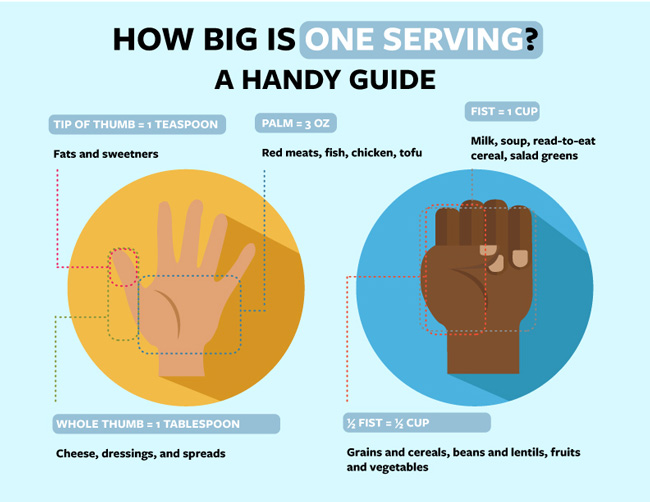As defined by World Health Organization (WHO), it is a “State of complete physical, mental, and social well being, and not merely the absence of disease or infirmity.”
Physical health includes aspects like Nutrition, Physical Activity, Hygiene and Sleep.
You can use “My Plate” strategy to plan your child’s nutrition. It helps you to choose what and how much to eat within your child’s calorie allowance using color codes. The five food groups are categorized using different colors as given below.
Vegetables have many of the vitamins and minerals kids need for good health, are naturally low in calories, and contain fiber. The vegetable group includes:
Fruits are an important part of a balanced diet. They contain necessary nutrients like vitamin C, potassium, and fiber.Fruit juices have more sugar and calories with less fiber per serving than whole fruit.
The grain group includes any food made from wheat, oats, cornmeal, barley, or other grain. Bread, cereal, rice, and pasta belong in this group.
At least half of the grains kids eat each day should be whole grains, such as oatmeal, brown rice, popcorn and whole wheat bread. Whole grains have dietary fiber that helps you feel full and can prevent and treat constipation. Eating a diet rich in whole grains also might decrease the chances of getting heart disease and diabetes.
Refined grains, like white bread and white rice, are processed, removing many of the nutrients. Most refined grains are enriched, which means that nutrients, except fiber, are added back after processing.
Foods that are high in protein help the body build and maintain the tissues of the body. They also have important vitamins and minerals, like iron.
Protein-rich foods include chicken, seafood, dry beans and peas, eggs, nuts, and seeds. Soy products like tofu are also good sources of protein. When eating meat, choose lean or low fat options.
This group includes milk and other dairy products, such as yogurt and cheese. Calcium-fortified soy milk is also included in the dairy group. Besides calcium, dairy products also have vitamin D. Vitamin D helps the body absorb calcium for healthy bones and teeth.
Foods made from milk, like butter, cream, and cream cheese do not have much calcium, and are not part of the dairy group.
Serve low fat or non fat milk and dairy products to kids over 2 years old.
Oils are fats that are liquid at room temperature, like the vegetable oils used in cooking. Oils come from many different plants and from fish. Oils are NOT a food group, but they provide essential nutrients.
Unrefined oils like Groundnut oil, coconut oil, sesame oil, mustard oil virgin olive oil are healthy oils for cooking. And refined oils like sunflower oil, rice bran oil are unhealthy.

You can use the menu plan given below to choose what food groups have to be included in each meal throughout the day.


Sugary foods: Foods with added sugars like chocolates, cool drinks, fruit juices, energy drinks, doughnuts, pastries, sweet rolls, sweets, pies, ice cream, cookies, candies, cakes are harmful for your child, because they are calorie dense and may cause dental cavities and can lead to lifestyle related diseases like diabetes, obesity and heart diseases.
Bad Carbohydrates: Foods rich in bad carbohydrates like refined grains (white rice, white bread, pizza, and burger), refined cereal (corn flakes), Potato fry, samosa, puffs.
Deep fried foods: The foods that are deep fried in oil like potato fry, puri contain high amounts of unhealthy type of fats called as Trans-fats and Acryl amide, a toxic substance that forms during high temperature cooking such as frying, roasting or baking. This poses a risk for cancer.
Street foods: Most of the street foods are deep fried in oil which is used repeatedly for frying, often over a period of days. This process of heating for days increases the trans-fatty acid content in the food. Since our body cannot process these trans-fatty acids, they clog our arteries which can lead to cancers, cardiovascular diseases, diabetes and many chronic diseases.
The unhygienic handling, use of unsafe water and exposure to flies and street pollution increases the number of bacteria, viruses and other parasites in the plate leading to many water borne diseases and food poisoning.